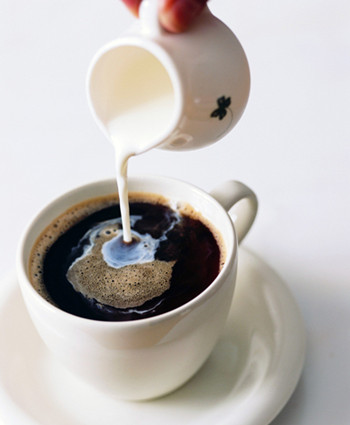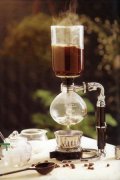Coffee bean ingredient vocabulary introduction what is caffeine?

Caffeine: caffeine is the most eye-catching of all the ingredients in coffee. It belongs to a kind of phytoxanthine (animal muscle component). It has the same properties as theophylline contained in cocoa, green tea contains the same theophylline, and the percentage of reduction after baking is very small. Caffeine has a very extensive effect. It will affect various parts of the human brain, heart, blood vessels, gastrointestinal tract, muscles and kidneys. The right amount of caffeine will stimulate the cerebral cortex, promote sensory judgment, memory and emotional activity, and make the myocardial machinery more active. Vasodilation enhances blood circulation and improves metabolic function. Caffeine can also reduce muscle fatigue and promote digestive juice secretion. In addition to this, because it also promotes the kidney function to help the body expel excess sodium ions (chemicals that hinder the metabolism of water molecules), caffeine will not accumulate in the body like other narcotic and excitant substances (narcotic drugs, paint solvents, stimulants, etc.) and will be excreted in about two hours. The biggest bitterness of ─ in coffee flavor is caused by caffeine.
Tannic acid: after extraction, tannin will turn into a yellowish powder, which can easily blend into water. After boiling, it will decompose and produce pyrosylic acid, which will make the coffee taste worse. If the coffee is soaked and left for several hours, the color of the coffee will become stronger than when it was just soaked. And it is also less tasty, so there is the saying that "it is best to drink it as soon as possible."
Fat: the fat contained in coffee plays a very important role in flavor. It is found that there are many kinds of fat in coffee, the most important of which are acidic fat and volatile fat. Acidic fat means that there is acid in fat, and its strength varies with different types of coffee, and volatile fat is the main source of coffee aroma. Once the fat contained in roasted coffee beans comes into contact with the air, chemical changes may occur and the taste and flavor will become worse.
Protein: the main source of calorie is protein, and like dripping coffee, most of the protein will not dissolve out, so no matter how much coffee you drink, the nutrition you get is limited, which is why coffee will become a sacred food for dieters.
It is said that Beethoven grinds sixty coffee beans every morning and then brews the coffee while grinding the coffee and enjoying its aroma. And then experience the fun excitedly. According to its size, the grinding methods of coffee beans can be divided into three types: rough grinding, medium grinding and fine grinding. Use the appropriate grinding method according to the coffee utensils. There is also medium fine grinding or very fine grinding (powdered coffee powder) which is finer than fine grinding. The timing of grinding coffee beans is before brewing coffee, only the need for grinding is the top grade. After the coffee bean is ground into powder, its surface area increases and absorbs moisture, which is easy to oxidize. In short, with the passage of time, coffee powder also plays a role of deterioration to damage the flavor. And after the ground coffee beans are placed, the carbon dioxide retained inside the beans will be lost together with the aroma. In this way, when the coffee powder is extracted and filtered, the coffee powder should be expanded without expansion, and you can't make delicious coffee anyway. The secret is to consider grinding and homework consistently, so brewing coffee is the most delicious and mellow.
Fine grind
◎ fine grinding (fine particles, the same size as sugar)
Medium grind
Grinding in ◎ (particles the same size as a mixture of granulated sugar and coarse white sugar)
Regular grind
◎ rough grinding (coarse particles, the same size as coarse sugar)
Important Notice :
前街咖啡 FrontStreet Coffee has moved to new addredd:
FrontStreet Coffee Address: 315,Donghua East Road,GuangZhou
Tel:020 38364473
- Prev

The History of siphon Pot basic knowledge of Coffee utensils
In 1840, a glass test tube in a laboratory triggered the invention of the siphon coffee maker (Syphon). The British took the test tube used in Biya's chemical experiment as a model to create the first vacuum coffee pot. Two years later, Mrs. Bachang of France improved the kettle, and the familiar upper and lower convection siphon pot was born. The siphon coffee maker lived in France for a long time.
- Next

Basic knowledge of ground Coffee beans
Coffee beans, the dark brown beans seem ordinary, but they have a lot of knowledge at all stages. The ideal time to grind coffee is to grind it before cooking. Because ground coffee is easy to oxidize and lose its flavor, especially without proper storage, coffee powder is also easy to change flavor, so it is naturally impossible to cook mellow coffee. Some people are afraid of trouble or don't want to.
Related
- Detailed explanation of Jadeite planting Land in Panamanian Jadeite Manor introduction to the grading system of Jadeite competitive bidding, Red bid, Green bid and Rose Summer
- Story of Coffee planting in Brenka region of Costa Rica Stonehenge Manor anaerobic heavy honey treatment of flavor mouth
- What's on the barrel of Blue Mountain Coffee beans?
- Can American coffee also pull flowers? How to use hot American style to pull out a good-looking pattern?
- Can you make a cold extract with coffee beans? What is the right proportion for cold-extracted coffee formula?
- Indonesian PWN Gold Mandrine Coffee Origin Features Flavor How to Chong? Mandolin coffee is American.
- A brief introduction to the flavor characteristics of Brazilian yellow bourbon coffee beans
- What is the effect of different water quality on the flavor of cold-extracted coffee? What kind of water is best for brewing coffee?
- Why do you think of Rose Summer whenever you mention Panamanian coffee?
- Introduction to the characteristics of authentic blue mountain coffee bean producing areas? What is the CIB Coffee Authority in Jamaica?

